Resources for the Future (RFF) first and foremost is a research organization—which means that it’s typically the researchers who are the focus of the work and attention at RFF. But on one fateful day, Resources Radio podcast hosts Kristin Hayes and Daniel Raimi did something pretty different from their usual podcast routine: they gave listeners a flavor of what RFF looks like today, across the spectrum of the organization.
A lot happens behind the scenes at RFF, and many fantastic contributors help get the work done. This quite spontaneous podcast episode involved wandering from office to office, tapping people on the shoulder to hear their thoughts, with precious little advance notice. Read on to hear from a collection of voices about how many different people help make RFF work.
Listen to the Episode
These interviews were recorded in February 2022 and broadcast in May 2022. The transcript of these conversations have been edited for length and clarity. Interviews by cohosts Daniel Raimi (DR) and Kristin Hayes (KH) are indicated in the text.


Aline Philpott
Hi, I’m a desktop support associate at Resources for the Future (RFF).
KH: How long have you been with us at RFF?
I’ve been working here since April 2021. Basically, a year.
So, you have experienced RFF largely during the pandemic?
Yes. I’ve been coming to the office often since I started here—at least a couple days a week. So, I’ve pretty much met everybody because I work for IT, and I handle the laptops for the new people.
It’s somewhat rare during the pandemic to have met so many folks. That shows how central the IT team is to the operations of the organization.
Yeah, thank you. It’s been great working at RFF. I enjoy it very much. And, hopefully, now that the office is going to open soon, it’ll be more fun to interact with more coworkers.

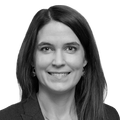
Carolyn Mollen
Hi, I’m the vice president for finance and administration at RFF. I have been working here for just over two years. I started in December of 2019 and was here for a whole three months before we went fully remote thanks to COVID.
KH: I’m sure that was a very “fun” time in which to figure out everything about the IT infrastructure, human infrastructure, and policies! We’re grateful that you led us through this very challenging time. Can you talk about your role here and what you’re responsible for?
I oversee the internal operations at RFF. We own our building, so everything dealing with the building, tenants, and our own office space; human resources and everything that comes under that; IT; and, of course, finance and accounting and all the budget and financial reports. It’s a lot!
Of all the things you work on—and there are many—would you say there’s something that you find particularly enjoyable about your role? Maybe something that stands out to you, or something particularly interesting about your work?
I really love the “people” aspect of my job. I’m a Certified Public Accountant—and while accountants tend to be introverts, I’m an extrovert. I love that I get to talk to people, and I especially love the HR aspects and some of the work we’ve been doing to try to help RFF become an organization where everybody will want to work.
The theme of our podcast episode today is “a day in the life.” What are you working on today, given the millions of things that it sounds like you could be working on?
Today is actually a funny day. I spent my morning switching offices because one of the things we’ve been working on is getting the office ready for everyone to come back. And that means assigning offices to all the people who have joined us in the last two years. So, I got to move, and this is my first day in my new office.


Maya Domeshek
Hi, I’m a senior research analyst at RFF.
KH: You’ve been here for several years. Tell me what a senior research analyst role entails.
Research analysts tend to do the coding and grunt work of the research that occurs at RFF. I work on two different models that we use for our research, and my job is mostly maintaining those models.
Maya, I’m just going to go ahead and say that I think you’ve dramatically undersold yourself in that introduction. I know for a fact that you are an incredible contributor to the research, and you also spend a fair bit of time discussing that research with policymakers! What are you working on today?
One of the things that I work on is an electricity model called Haiku, which represents the US electricity sector at an aggregate level. It’s a long-term planning model that helps us think about how the electricity sector might change over time. Today, I’m working on calibrating that model and making sure that we represent projections of renewable electricity usage correctly.
What’s one thing that you would highlight as something that’s particularly enjoyable or interesting about your job here at RFF?
I particularly enjoy coming up with new projects. I haven’t been here quite long enough to come up with a lot of projects, but I have been around for the start of some projects, when we were able to frame some of the questions—in one case, about the relationship between climate policy and public health. For instance: What’s a useful takeaway? What questions are worth asking?

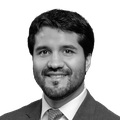
Luis Fernández Intriago
Hi, I’m a postdoctoral fellow at RFF.
Daniel Raimi: We’re basically barging in on people and asking them what they’re doing—like, right now. What are you working on today?
We’re giving some consultancy to New York State. We’re tweaking a model and getting it ready to replicate—the best that we can in the actual state of the economy—so we can give the best policy advice to them.
Where did you grow up? How did you get interested in environmental issues?
I grew up in Mexico City. It’s well known that it’s really polluted. But I started working on environmental issues later in my PhD. I started out as a labor economist, more focused on understanding the macro effects on labor markets and things like that. I took a really interesting class on environmental economics in my PhD—and that was basically what changed my life. I already understood that we need policies to make the environment better, to have clean energy, and all these things that we are discussing right now—but at the same time, these policies may come at a cost for some workers and industries. I wanted to understand how we can find a balance; ease the transition; and help get a little bit of what, in economics, we call a “double dividend”—to try to see if there’s any way to leverage economic tools to make the environment better while hurting the smallest number of people possible.
What’s something about your job at RFF that you enjoy?
The thing I like most about my job is using my tools and training to try to influence policy and better decisionmaking. I remember, when starting my undergrad, that I wanted a profession in which I could have the most impact. And when I chose to be an economist, I was worried that I wouldn’t be able to have a big impact. When I decided to be an economist, I told my father—who is a surgeon—that I was worried about the impact that I could achieve, and I stressed the fact that I wanted to affect policymaking. He told me something that was really reassuring: he said that, by being an economist and by working in policymaking, I could potentially affect many more people with a single good policy than all the patients he could treat in his whole career.
So, working here at RFF, being able to advise federal and state governments, helping design policies that balance environmental and economic improvements, and all these things—I think it’s incredible. Using my tools and everything that I’ve learned to influence policymaking—I think that’s the best part of my job.


Mun Ho
I am a visiting scholar at RFF. I work with the Harvard-China Project, but I live in Washington. So, I come to this office to work with colleagues.
KH: How long have you been associated with RFF?
I’ve been here since 1999, except for four years when I was abroad.
Can you talk about the scope of your research and what’s of interest to you?
I’ve been doing a lot of work on US energy and carbon policies, and I’ve also been doing the same thing for China. My current research is focused on Chinese issues—Chinese electricity policy and carbon policies.
So, the big question of the day is: What are you working on today?
Today, I’m trying to debug a computer programming problem with my China model. I’ve been sweating—quite literally sweating—because I’ve been struggling for the past three days with a bug in the model!
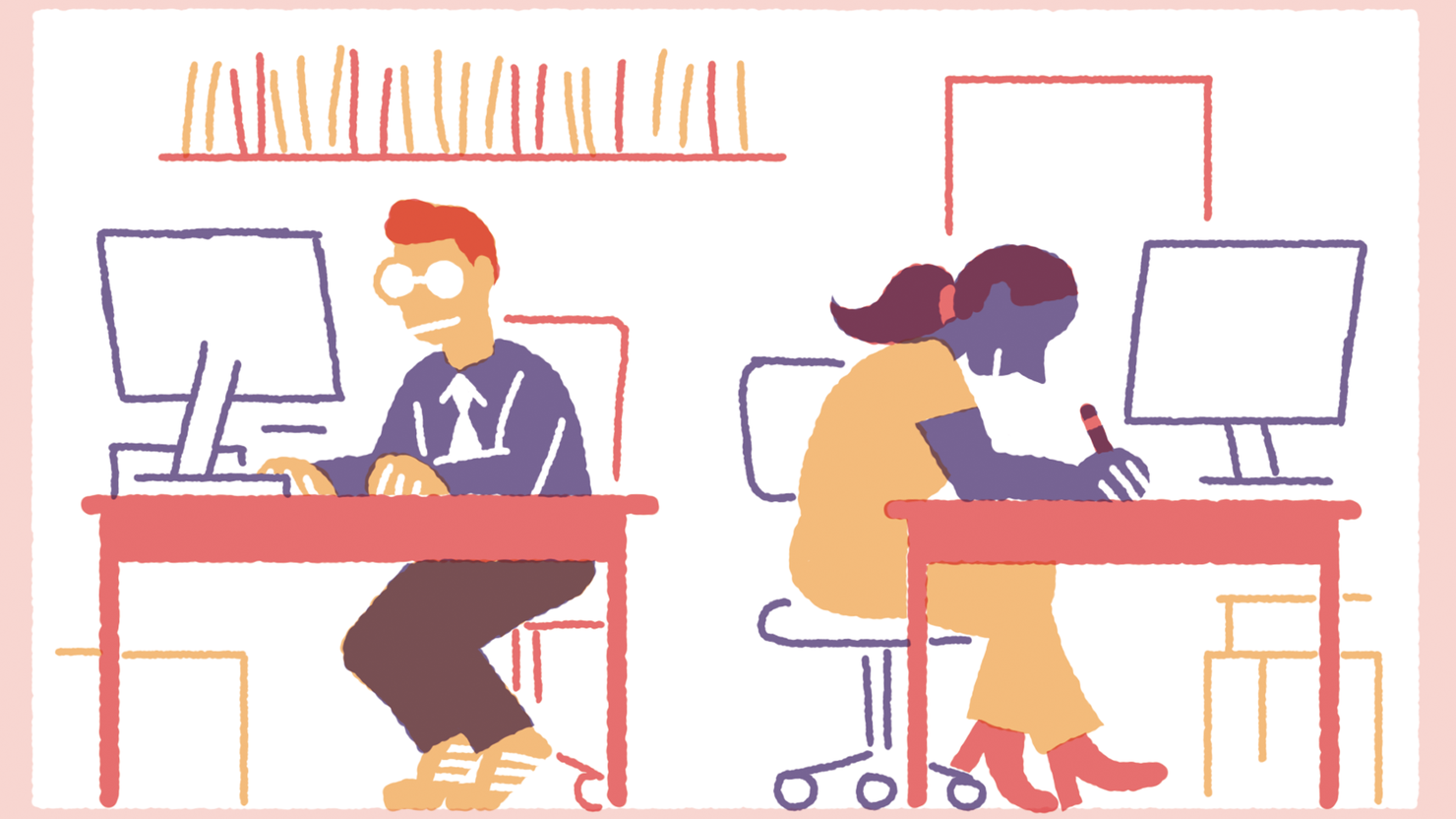

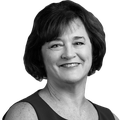
Margaret Walls
Hi, I’m a senior fellow at RFF.
DR: We’re just popping in today to see what you’re up to. What are you doing right now?
We’re working on a couple of explainers (which are popular RFF publications) on flooding. So, I’ve been going back and forth with Donnie Peterson (RFF’s communications and events associate) about flooding trends in the United States over the past couple of decades. I’m digging through all the literature I have stored on my computer, and googling around, trying to find exactly the right publications to cite for these statistics.
What kinds of metrics can we use to understand who might be more vulnerable and more exposed to different risks?
When we think about flooding or any kind of disaster impacts, we talk about “risk” as the hazard itself—the likelihood of an event happening, the exposure in the area that’s at risk, and the vulnerability of the population. Vulnerability is your ability to “weather the storm,” and poorer people tend to live in flood-prone areas—that is a fact—and they tend to be less likely to have flood insurance. Study after study shows that flood insurance is really important for recovering from these events. And these folks also might have underlying health conditions and so forth that make them at risk. Where are those places in the country? Some are coastal; some are riverine areas, where there’s river flooding. We map the floodplains in the country. We know something about where those flood risks are, and we tend to find more vulnerable people in most of these locations (setting aside those right-on-the-coast, high-end properties, which also are at risk).
What are the key things you want people to take away from the flooding explainers?
The explainers are going to describe what flooding is, where it comes from, what the trends are, how climate change is changing it, and what the impacts are. There will be two explainers. One will be a fact-based description of what kind of flooding there is and what the impacts are, and the second one will be about the policies that can address the problem.


Matthew Wibbenmeyer
Hi, I’m a fellow at RFF. I’ve been working here for about three and a half years now.
KH: And research fellows, of course, are the backbone of everything that happens here. How would you characterize the role of a fellow at RFF?
We’re researchers who work on environmental economics and policy-related questions that are intended to make an impact on policy and decisionmaking. I think what I like the most about working at RFF is just how varied the job is. In a given week, I may be working on four or five different projects, writing, doing analysis, and having meetings with other researchers or policymakers or funders—so it really is varied, and that's enjoyable for me.
What have you been working on today?
I attended our climate resilience impacts and adaptation meeting in the morning. And then I had a couple of research meetings this afternoon, looking at environmental justice issues related to the allocation of fuel treatments for wildfire risk reduction—and another project that’s looking at household residential location decisions across wildfire-risk areas.
How do you decide what’s going to be your next big undertaking?
In the case of one of the projects I mentioned, we were approached about an extension to a previous project that we had been working on, for a presentation at an academic conference. That’s how that project got started.


Billy Pizer
Hi, I’m the vice president for research and policy engagement at RFF.
KH: How long have you been at RFF?
I originally came to RFF in the fall of 1996, right after I finished graduate school with my PhD in economics. I started again at RFF in May 2021. So, this is my second time around. And I assumed the role of vice president for research and policy engagement in September 2021.
I know this is going to be a tricky question, because you have a wide set of responsibilities, but tell our listeners about your role.
The main thing about my role here is trying to help the research staff formulate and execute a research agenda that is intellectually interesting, relevant for policymaking and decisionmakers, and can be presented in ways that reach our audience so they can assimilate the information. It’s really working with the research staff to formulate the strategy for research at RFF. I’m spending a lot of time, right now, trying to recruit new people to RFF, because we really want to expand the research staff. And then there’s lots of little bits and pieces about trying to make the organization run more smoothly, efficiently, and effectively.
What, of those many things, are you working on today?
All of them. Seriously—my day has been all over the place. I had a morning meeting where I heard about new research that Margaret Walls and Penny Liao are doing, looking at the impacts in coastal regions of rising sea levels and how that’s affecting businesses. So, I got to hear about new research. I got to explain prospective research to funders. We also had a policy conversation about making our models open source, which I think is a great idea but has complications. So, lots of little pieces. I think one of the reasons I really like the job is because it jumps around a lot. I’m never bored.
I think the thing I really like about my role at RFF is helping the researchers do what they enjoy doing, which is doing research that’s policy relevant. To the extent I can help them figure out how to do that better—that’s incredibly gratifying. I think the other thing that’s kind of cool (and I was actually just thinking about this the other day) is that I get to learn about a lot of things. I have my little areas of research that I’ve focused on for 25 years, and I know a lot about that stuff, but I don’t know that much about sea level rise and employment on the coast, or wildfires, or electricity modeling—and I get to learn about all that stuff and try to be a little bit knowledgeable about all of it through this job.


Anagha Komaragiri
Hi, I’m a communications associate at RFF. I mostly focus on RFF’s publications and make sure that our research is condensed and conveyed in the most effective way possible. That involves playing with new visual formats, new structures, and new styles of publications that we want people to read. It’s been exciting to brainstorm new ideas for publications.
KH: What have you been up to today?
I’ve mostly been big-picture planning for the next month of publications at RFF. I’ve also been thinking about how to get RFF’s annual report, which we’ve just wrapped up, on our website and designing the webpage—just thinking through how to present it creatively. On top of that, I’ve also been designing some figures for a handful of reports that we’re about to release in the near future—actually getting into the weeds on some graphs and charts here and there.
Tell me one thing about your job that you’ve found particularly fun, interesting, or surprising in your first six months here at RFF.
I would say that something I’ve been surprised by is how much creative agency I have in this role. I’ve really liked having the opportunity to come up with ideas, and I feel like I’m playing a pretty important role on our team and making decisions for how RFF’s content is displayed to the world.


Sarah Tung
Hi, I am the communications and events manager at Resources for the Future.
DR: You are a woman of many hats. When we stepped in to bother you, what were you working on?
I just stepped out of a meeting with one of our researchers, who’s working on putting together a private workshop. We were just chatting about the list of potential speakers for that, so that’s top of mind for me today. I’m also working on getting our annual report printed and mailed to RFF’s supporters.
How did you end up coordinating events here at RFF?
I joined as part of the marketing and events team; my primary background is in communications. But in this new role that I stepped into late last year, I’ve been taking more of a guiding and strategic role with putting on events. I think something I enjoy about working on the comms team is—like you said, I wear many hats on the job, and that’s something that can be really fun. In addition to the fact that I feel like I’m learning a lot from the research that we put out, I also feel that, similarly, I get to learn a lot on the job because I wear so many hats. It’s always different, every day, depending on what we have going on. One time, I got to help with putting together an infographic; another time, I got to help with drafting a press release. Every day is always a new day.


Andreea Culian
Hi, I’m the director of corporate engagement at RFF. I get to sit at the intersection of our corporate donors, partners, and RFF’s work. So, I have my ears perked up to what RFF is doing, our latest research, and the emerging issues that we’re thinking about—because RFF really sits at the cutting edge of the future, and companies are part of what we’re working on. We don’t just work in a bubble or in a lab by ourselves—we work together with the marketplace, and companies are part of where we need to move forward, advance, and make progress.
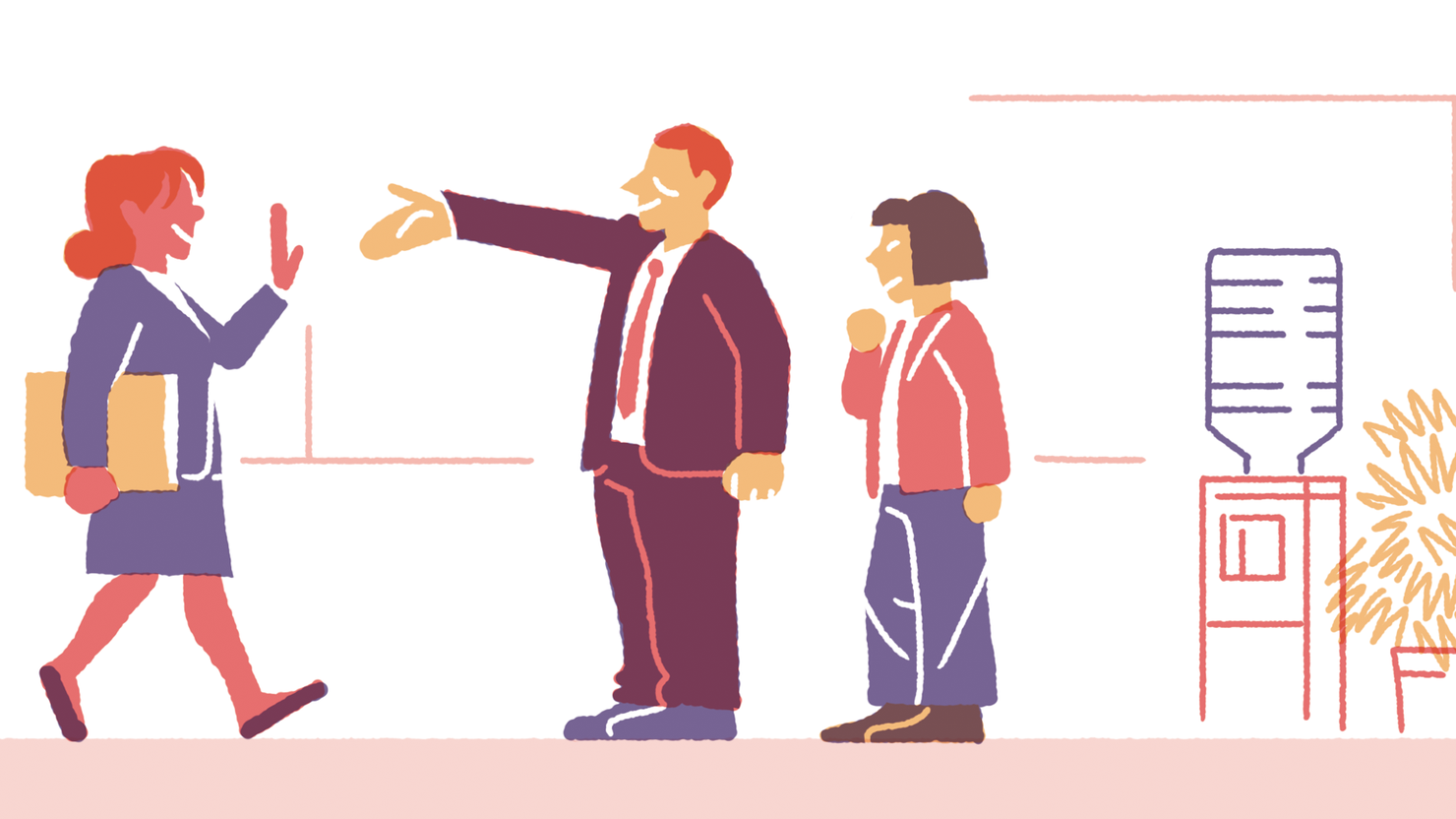
Just yesterday, I was in a call with one of our donors and Joshua Linn, a senior fellow in RFF’s Transportation Program. And they were geeking out on one of the data tools that they developed and going very deep into the analysis. It was such an honest discussion that, at the end of the meeting, the donor basically said, "We appreciate this conversation, because you all at RFF are really trying to ask the right questions." I hear that over and over, every single day, which is inspiring.
And it’s good to see that our corporate partners understand that RFF’s research is independent. We accept funds to support our work, and we are very clear that that cannot influence the outcome of the research—the research is what it is. And that’s something we put up front in the conversations, so there’s no confusion. There’s great appreciation around that.
DR: Andreea, as we burst into your office and interrupt your day, what are you working on right now?
Every day is different, which is what makes the job so exciting. Right now, I’m working on preparing RFF’s president, Richard Newell, for his upcoming trip to CERAWeek, which is the largest conference of energy professionals.
Yeah, it’s like the Energy Super Bowl.
Exactly! So, I’m working on preparing meetings and connections for Richard to make while he’s there, which is challenging—it’s a sea of people attending the event, so we have to be strategic.


















